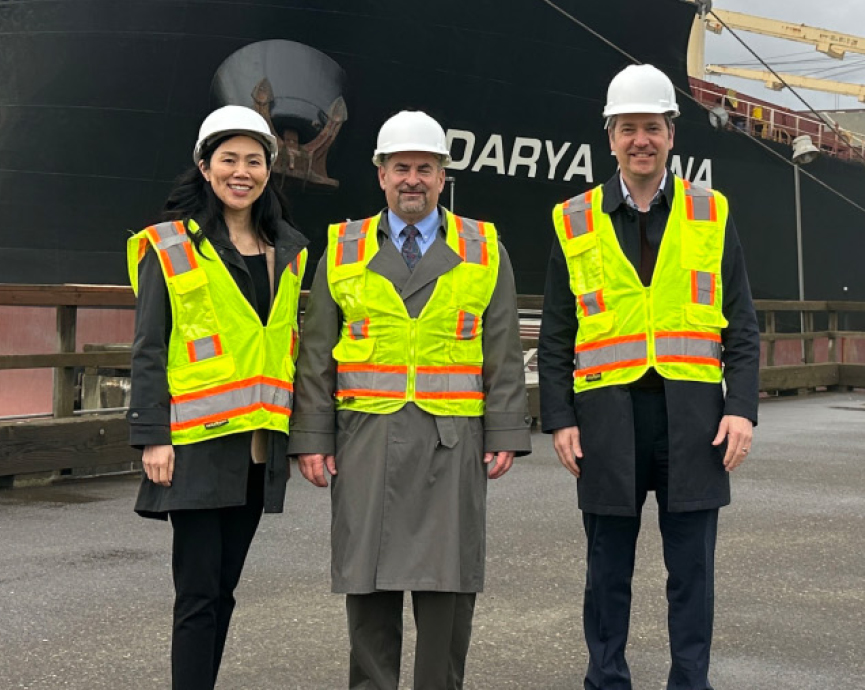The Federal Reserve’s 12 Reserve Banks, operating around our nation, help ensure that a wide range of household, community, and business economic conditions and perspectives inform Fed policies, actions, and decision-making. The Reserve Banks work to keep the U.S. economy strong – focusing on stable prices, full employment, safe banking, and secure payments.

The 12 Reserve Banks work independently with oversight from the Board of Governors in Washington, DC. The Reserve Banks are the operating arms of the Federal Reserve System and function within their own geographical Districts.
The Fed identifies its Districts by number and the city in which each District’s main office is located. The region served by the Federal Reserve Bank of San Francisco is known as the Twelfth District.
Each Reserve Bank has a board of directors that serves as a link between the Federal Reserve and the private sector. Directors come from a range of backgrounds and bring valuable insights into the economic conditions within each District.
“One of the most unique and important aspects of the Federal Reserve’s decentralized structure is the participation of the American public in the ongoing operations of the 12 Reserve Banks.”
— Esther L. George, Former President and Chief Executive Officer, Federal Reserve Bank of Kansas City
Federal Reserve Banks in Action
Each of the 12 Reserve Banks brings its distinct expertise, research focus, and outreach-informed perspectives, alongside its supervisory and operational duties, to carry out the Federal Reserve’s work.

Specialization Contributes to the System
Each Reserve Bank provides input that benefits the whole country. For instance: Leveraging the presence of major tech hubs across the District, like Silicon Valley, Silicon Slopes, and Seattle, the San Francisco Fed hosts the EmergingTech Economic Research Network (EERN) to develop deeper insights into the economy of the future.

Research and Listening Inform Leadership
Led by its President, each Reserve Bank provides monetary policy leadership informed by robust economic research in its areas of specialty and the perspectives of the people in its District.

Active Engagement Facilitates Learning

Supervision Supports a Safe and Sound Financial System
Reserve Banks ensure that banks are operating in a safe and sound manner. Supervising individual banks and financial institutions in each District, and monitoring their impact on the U.S. economy as a whole, helps preserve the integrity of the U.S. financial system.

Core Services Support Payment Systems and Cash Circulation
Federal Reserve Banks Work for You
By carrying out the Federal Reserve’s five core responsibilities, Reserve Banks directly impact your everyday life and financial wellbeing.
Keeping the Economy on Track
With input from each Reserve Bank president, the Fed adjusts interest rates and manages the money supply to balance inflation and job growth. This supports stable prices, which helps ensure the dollar in your pocket keeps its value, and full employment, which helps ensure that when you want a job one is available.
Ensuring Fast, Secure Payments
The Fed’s Reserve Banks support the payment system, from the physical circulation of cash and coin to digital systems. They keep money moving securely, from payroll direct deposits to online transfers. This helps ensure your paycheck arrives on time, your transactions are protected, and your funds are readily accessible as cash.
Fostering Financial Stability
With regional input from the Reserve Banks, the Fed watches out for financial system risks to help ensure the system supports a healthy economy. This helps protect the safety of your savings, your job, and your investments.
Supervising Banks
From some of the largest, most recognized, and most complex banks to very small community banks across the Reserve Bank Districts, the Fed monitors and examines regulated financial institutions to help ensure they comply with laws and rules. This helps protect your deposits and ensure banks remain available to provide important financial services in your community.
Strengthening Communities
Reserve Banks work to understand how economic conditions are impacting businesses, consumers and workers in urban, suburban, and rural communities across the country. They conduct research and share information on issues that expand economic opportunity, such as employment, access to credit, and small business. These efforts help strengthen economic conditions and financial wellbeing in your community.
